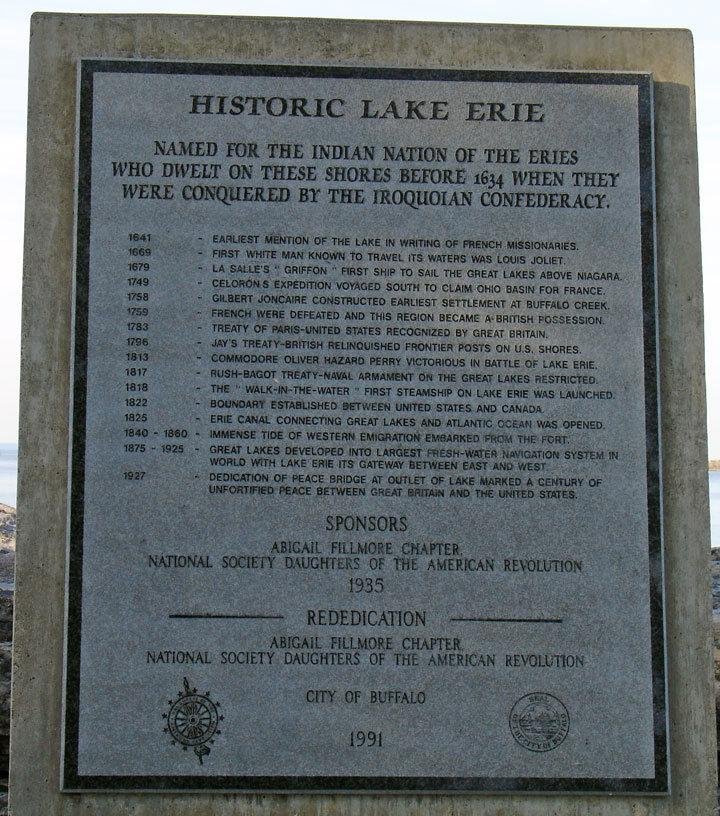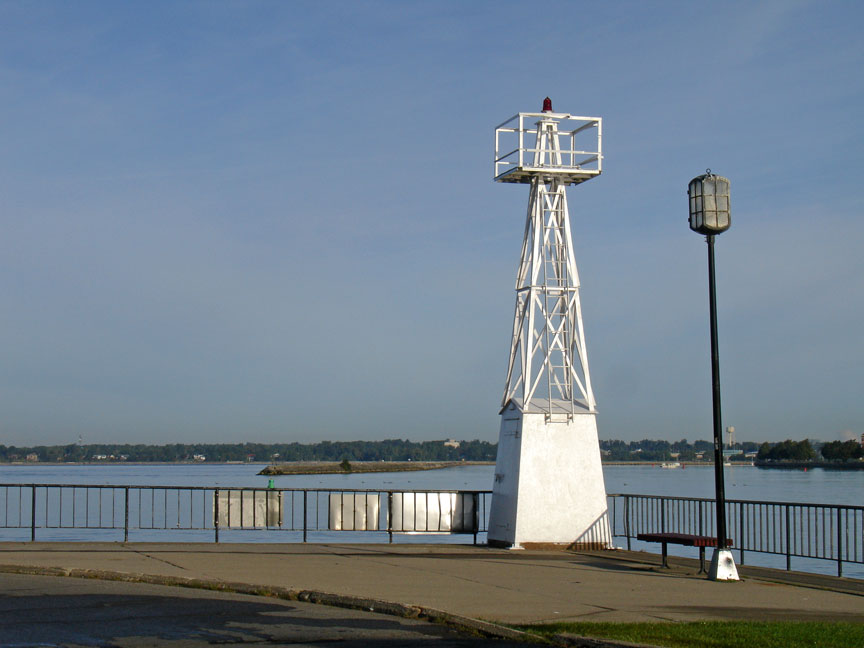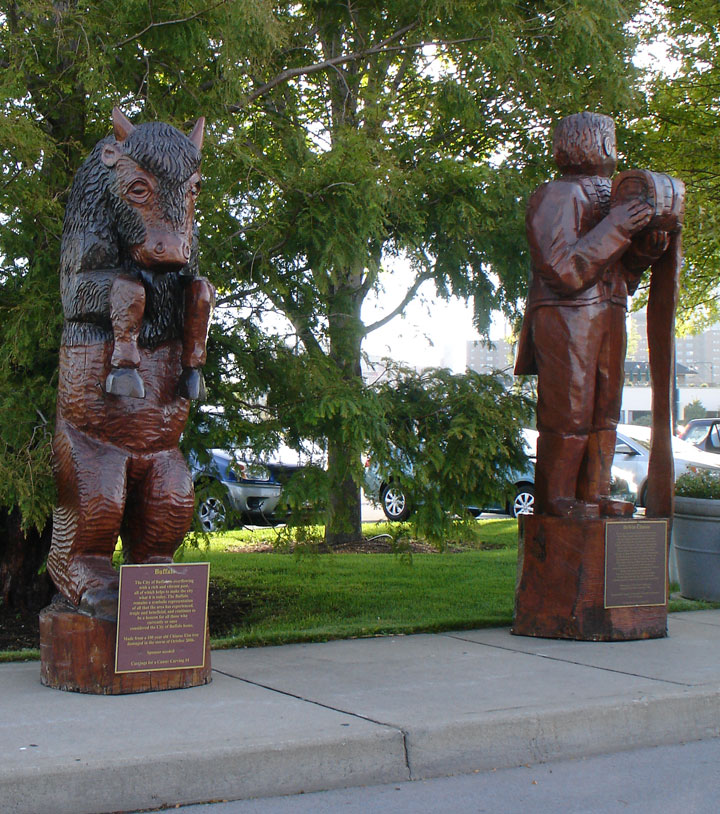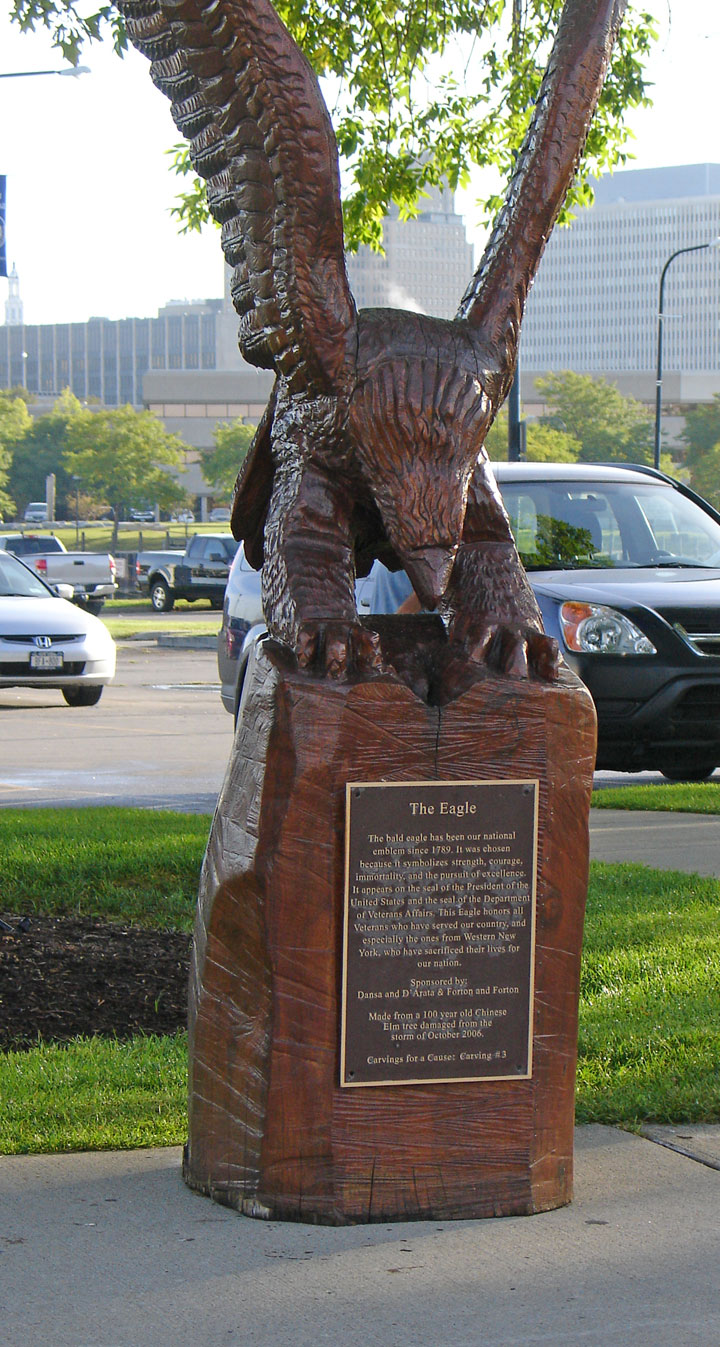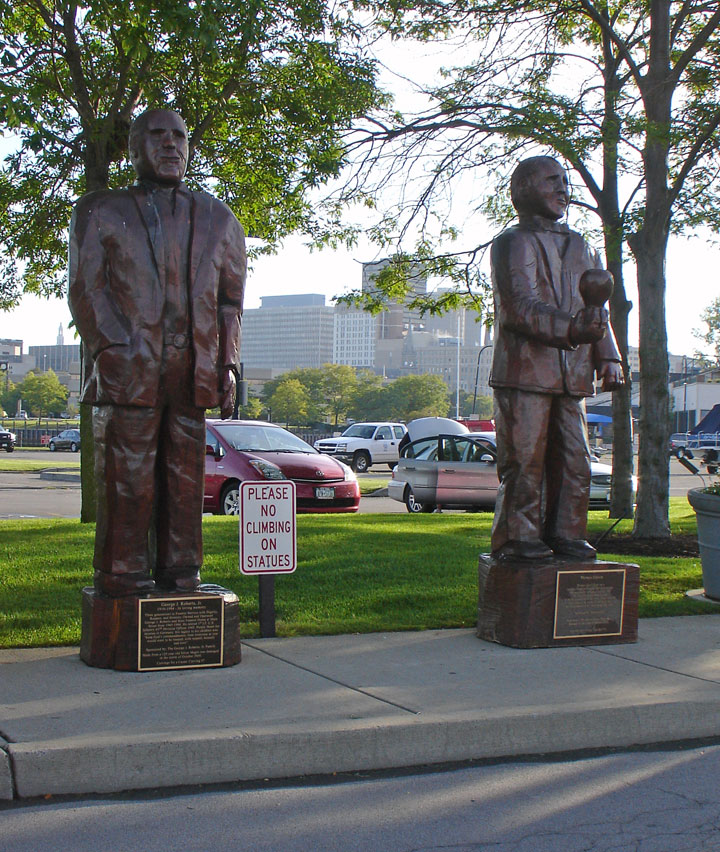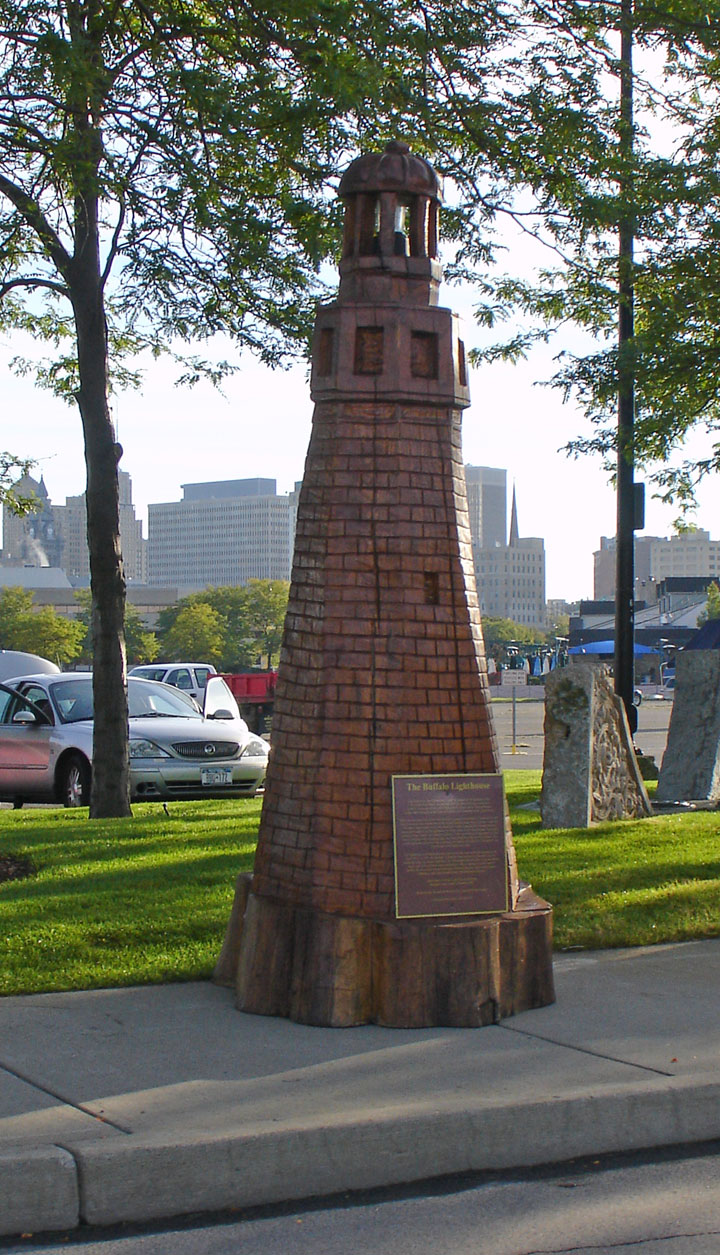

Erie Basin
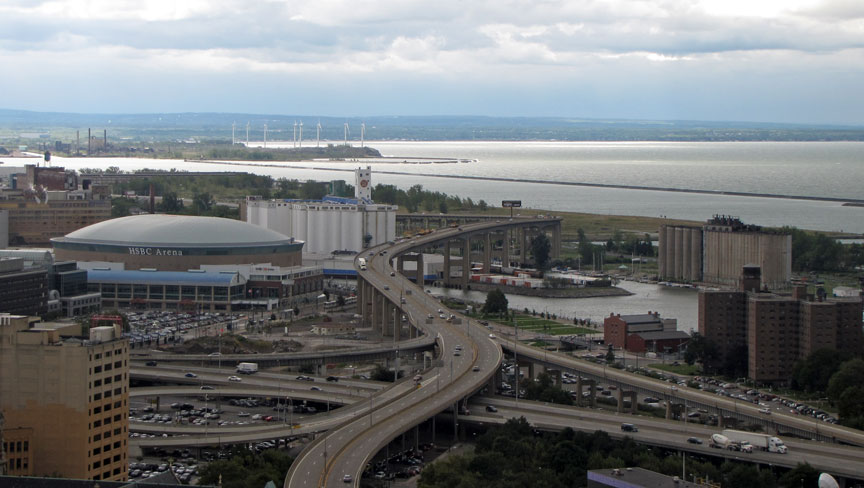
Erie Basin
photo from the top of City Hall
The Buffalo River is a river that empties into the eastern end of Lake Erie, one of the Great Lakes, by the City of Buffalo in the United States of America. This stream is called the Buffalo River only in the vicinity of the city and is known as Buffalo Creek as it flows through other parts of Western New York. This change in name occurs near the western border of the Town of West Seneca, where Buffalo Creek receives the contents of Cayuga Creek. The river is further increased by the confluence with Cazenovia Creek in Buffalo.
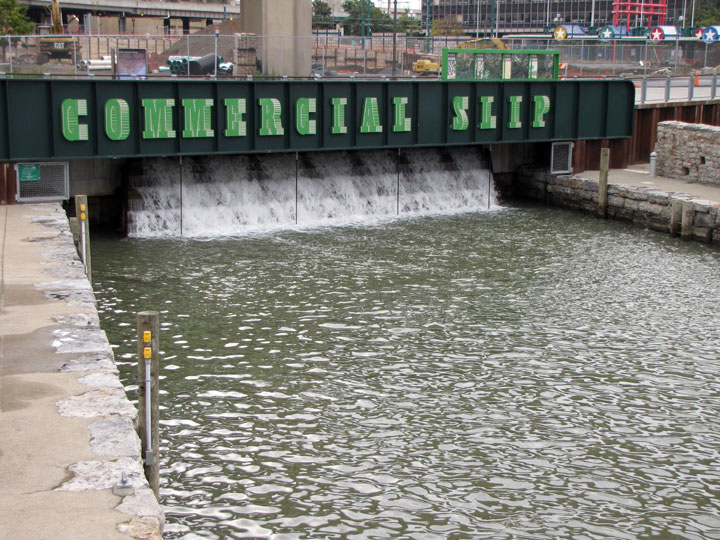
Commercial Slip
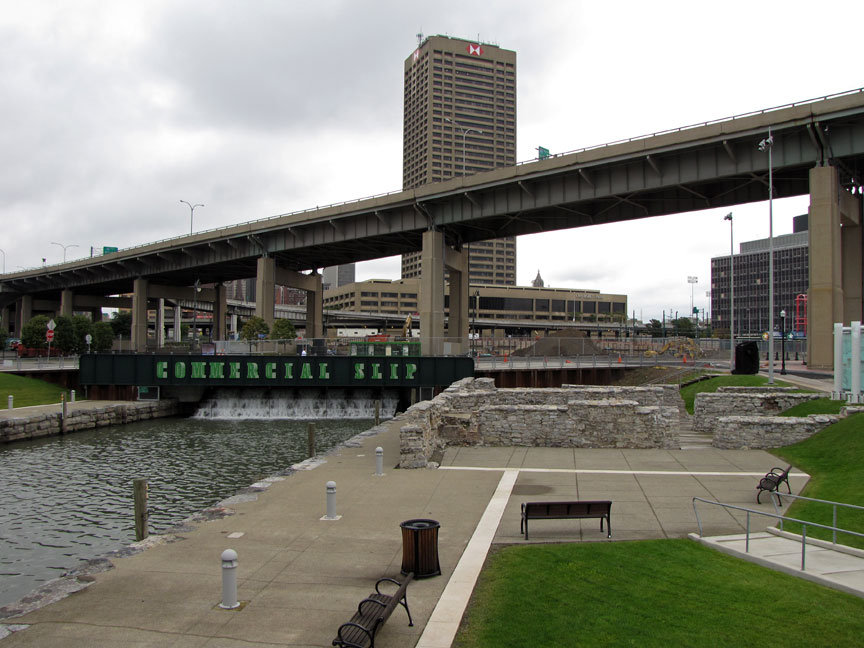
The Buffalo River flows westward from the point of confluence, soon passing
through a heavily industrialized part of the city. The river enters the lake
between the United States Coast Guard station and the Erie Basin Marina. The
grounds of the Coast Guard station include the 1832 Buffalo Lighthouse. The
Buffalo River was the western terminus of the famed Erie Canal. Entry to the
River from the Canal was gained via the mouth of a small tributary, Little
Buffalo Creek, which was excavated and stabilized to form the Commercial Slip
leading from the Erie Canal. The Buffalo River formed the southwest boundary of
the rough pentagon that enclosed the "Five Points" or "Canal Street" district,
bounded on the northeast by the Erie Canal. When the Canal was completed in
1825, New York Gorvernor Dewitt Clinton's vessel was towed from the Canal
through the Commercial Slip and Buffalo River to Lake Erie, where he poured
Atlantic Ocean water into the Lake, and collected Lake water to place in the
ocean after his return trip to New York City.
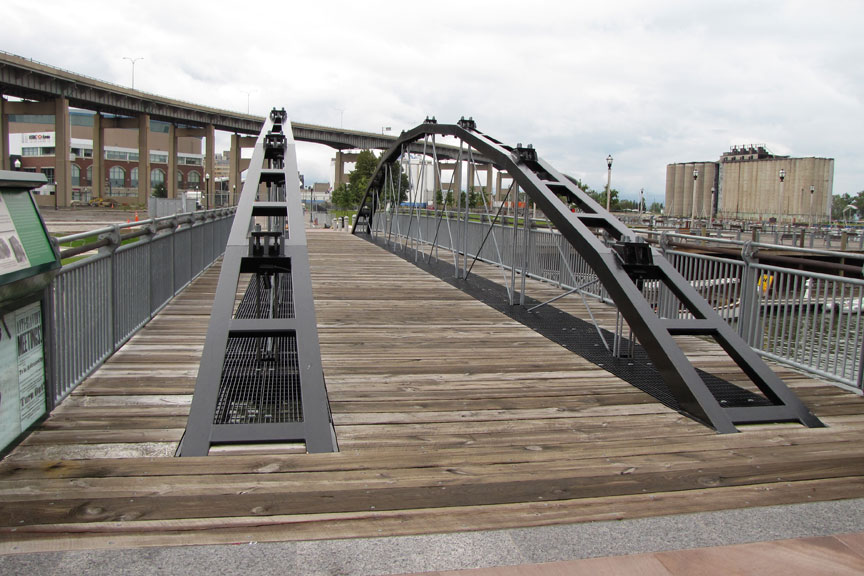
The entire river is now regarded as an urban canoe trail, and the portion
nearest the lake is part of the Port of Buffalo, able to take on larger vessels.
This part was once extended to expand the port by means of the City Ship Canal
and its extension, the Lehigh Valley Canal. The canals paralleled the river
briefly and increased the dockage available for shipping. The canals have now
been mostly filled in. One exception is a portion which has been used for the
Tifft Farm Nature Preserve in the southwest corner of the city. Parts of the
canal are now ponds within the preserve.
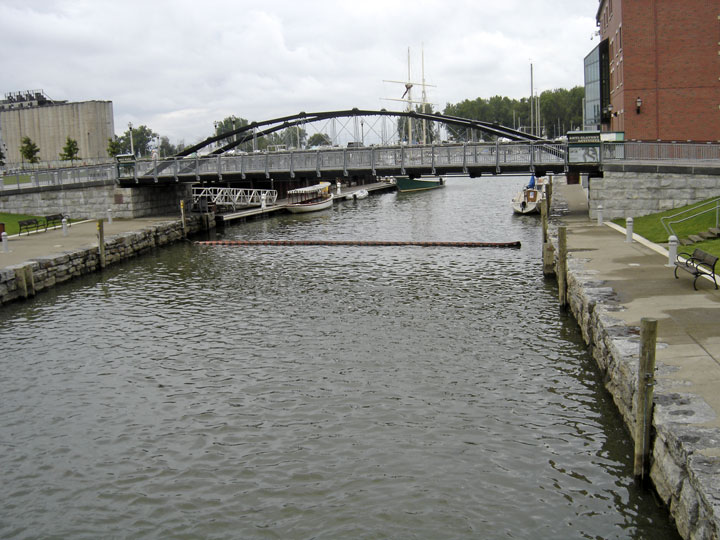
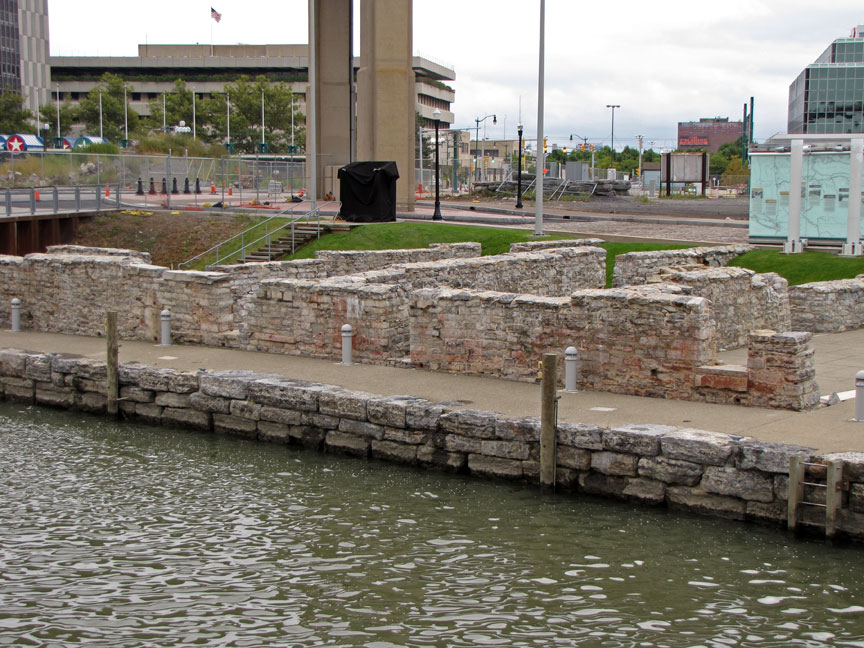
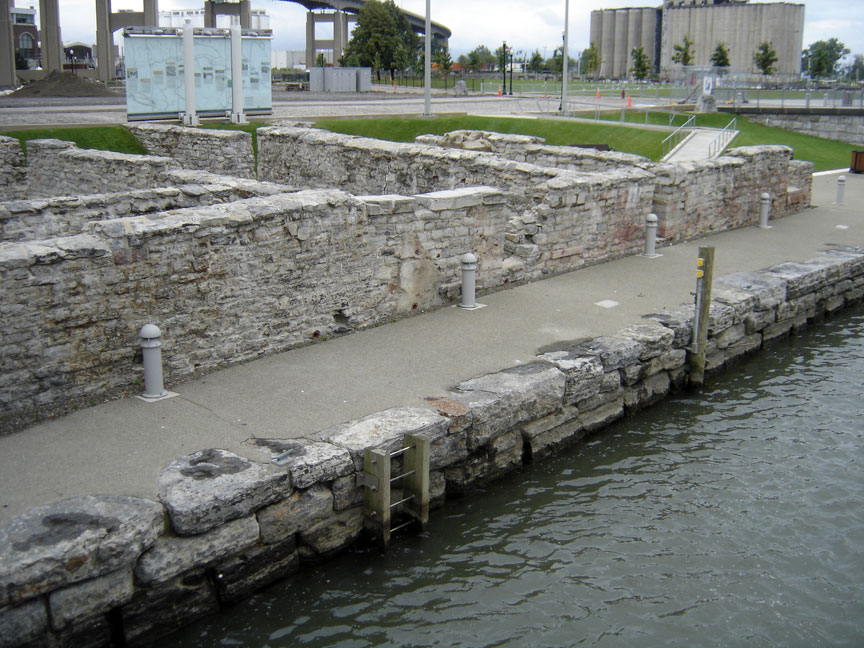
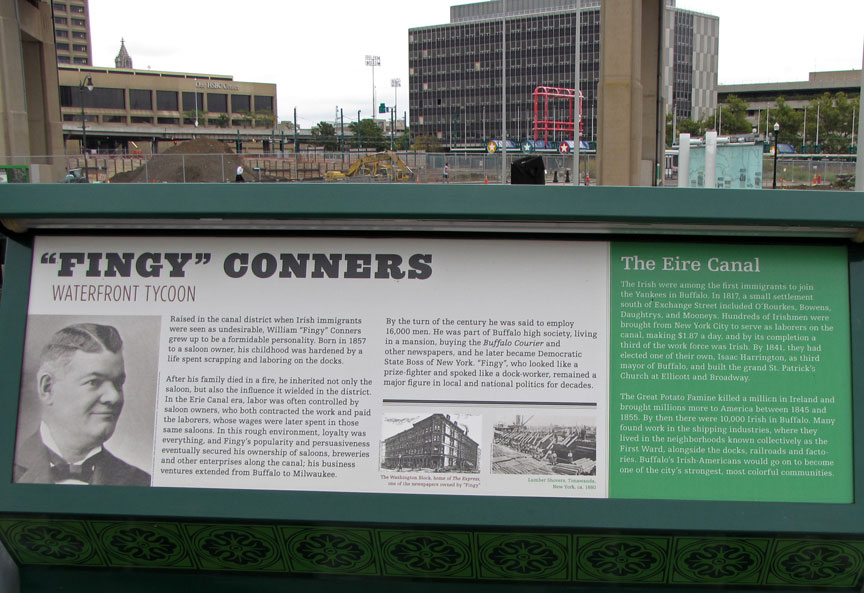
Buffalo Creek is a meandering stream before it becomes the Buffalo River. It
originates in the south part of Erie County and the western part of Wyoming
County. The Erie County sources are in the Town of Holland before flowing
northward through the other towns in the county. In Wyoming County, the sources
are in the Towns of Arcade, Java, and Sheldon, before flowing into Erie County.
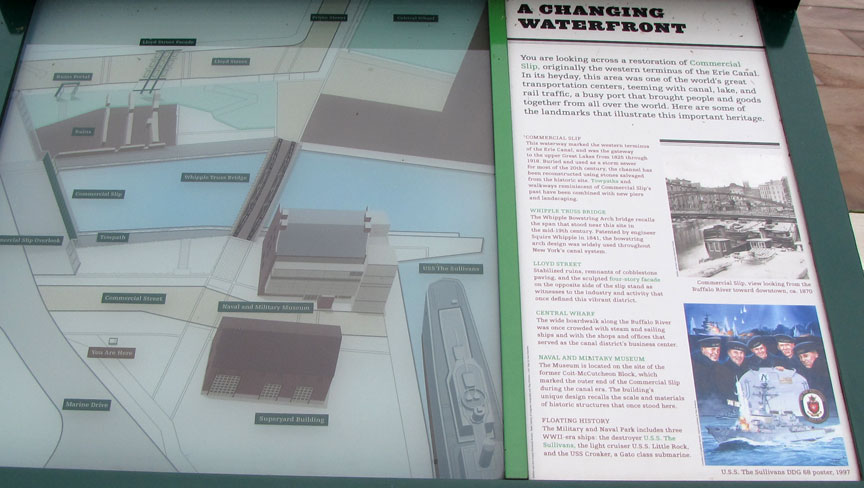
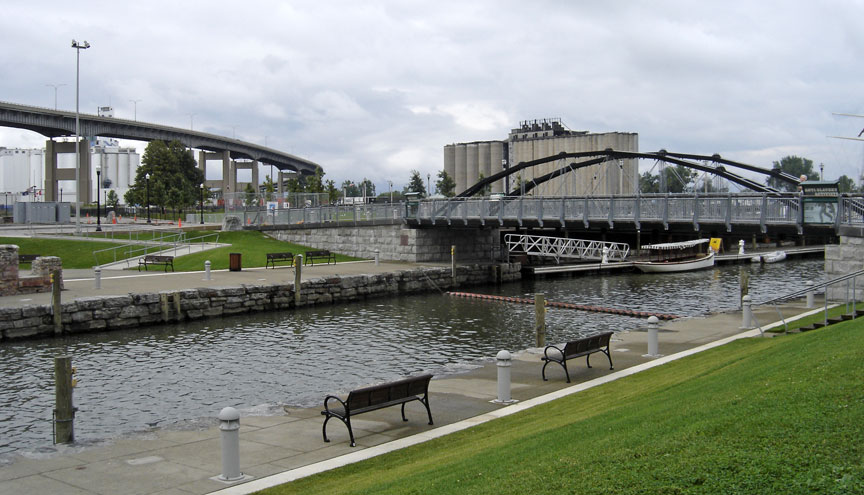
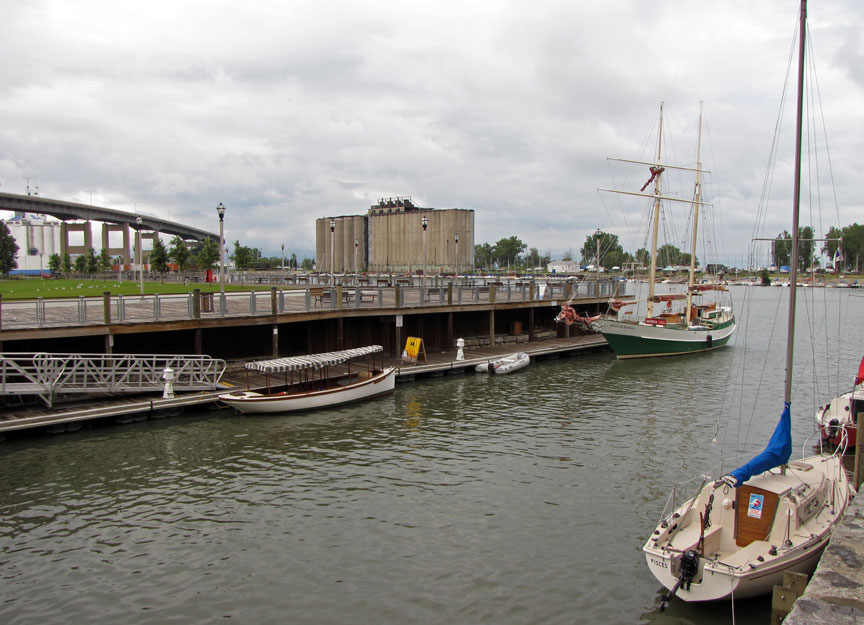
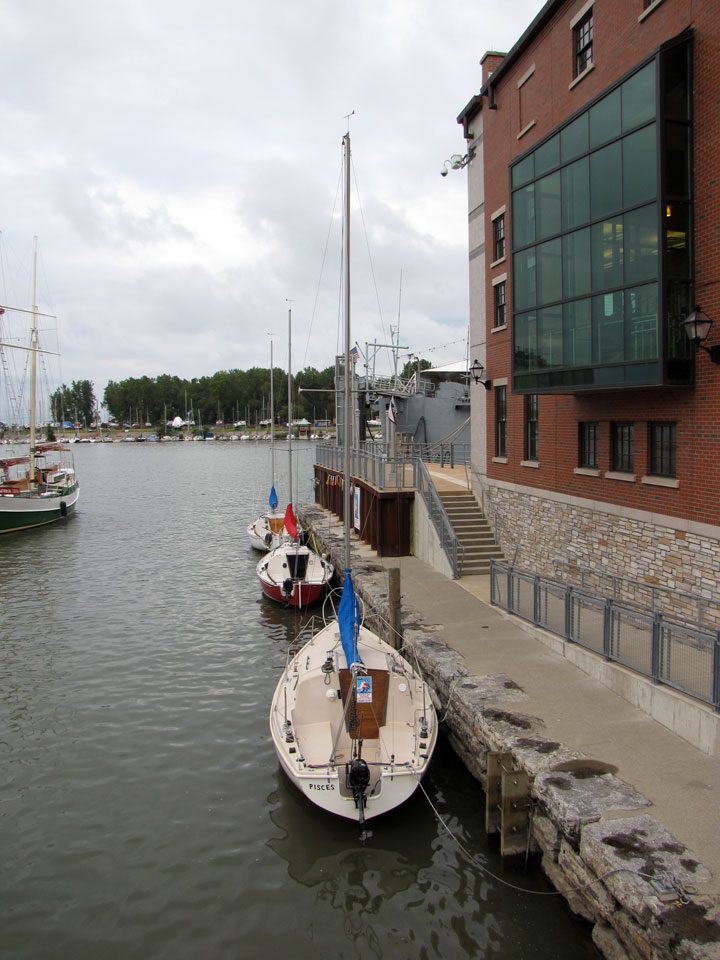
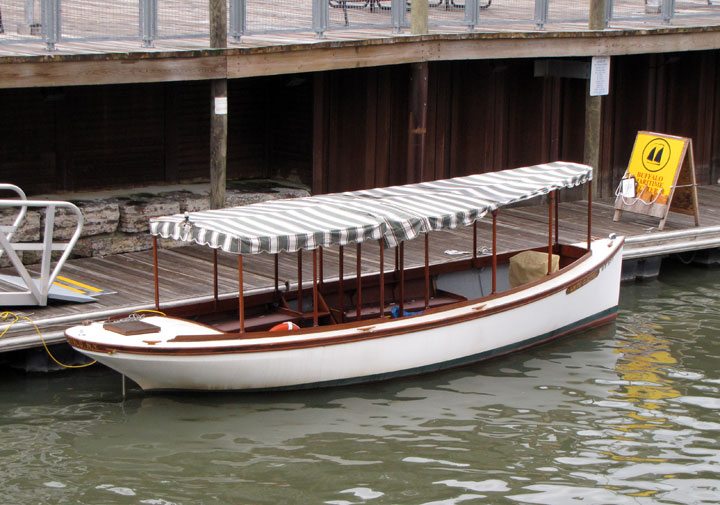
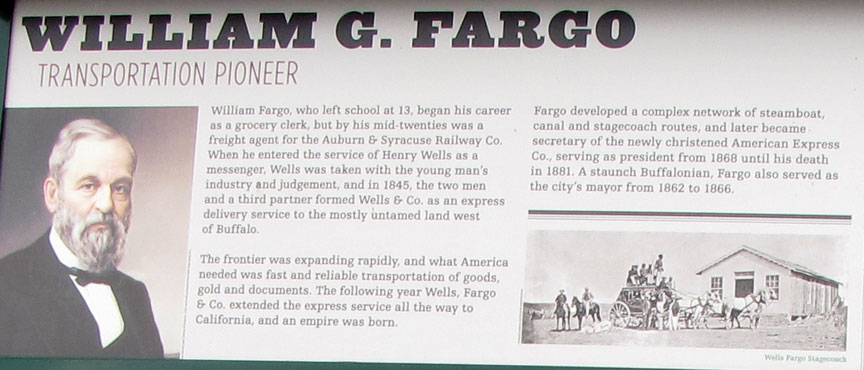
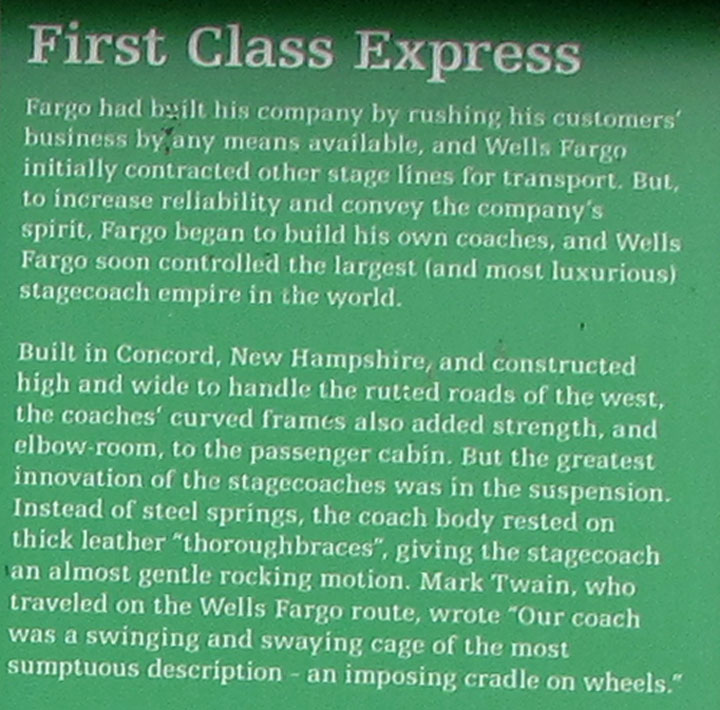
It is a well known fact that the City of Buffalo received its name from the
creek of the same name, however, there are several unproven theories as to the
origin of the name of the creek. Early French explorers reported the abundance
of buffalo on the south shore of Lake Erie, but their presence on the banks of
Buffalo Creek is still a matter of debate, so the origin of the name of the
creek is still uncertain. Neither the Native American name ("Place of the
Basswoods") or the French name ("River of Horses") survived so the current name
likely dates to the British occupation which began with the capture of Fort
Niagara in 1759. The British engineer John Montresor mentions the name Buffalo
Creek four times in his journal of 1764, indicating that the name was in common
use at that time. Another argument is that the creek is named after a Native
American who once lived on the bank of the river, but there is no evidence to
support this theory. The claim that the name is an Anglicized form of the name
Beau Fleuve (beautiful river), which was supposedly an exclamation uttered by
Louis Hennepin when he first saw the stream, is the least likely explanation.
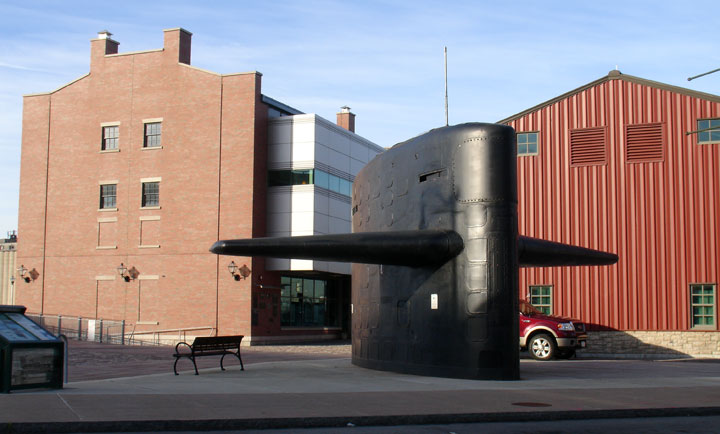
part of the naval museum

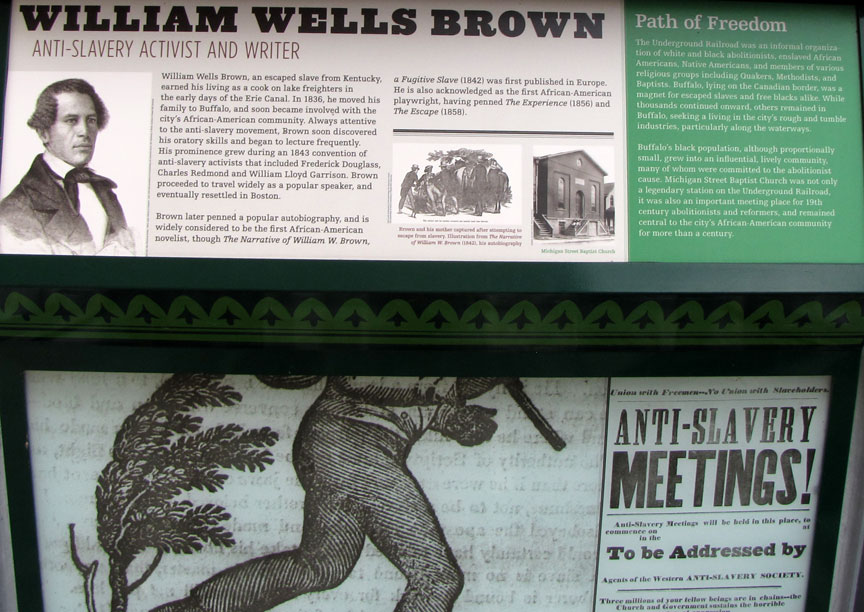
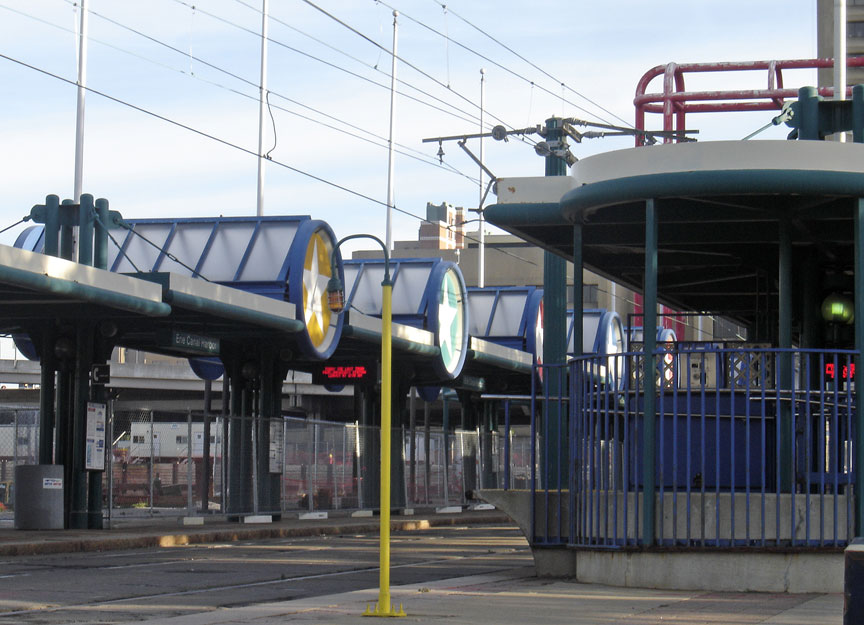
Erie Basin end station of the light rail
An Indian village was established on Buffalo Creek by the British in the spring of 1780. These were Senecas and others who had fled to Fort Niagara after the Sullivan Expedition of 1779. On July 8, 1788, Oliver Phelps and Nathaniel Gorham met with Indians of the Five Indian Nations of the Iroquois Confederacy (including Mohawks, Oneidas, Onandagas, Cayugas, and Senecas) at Buffalo Creek to execute a deed or treaty for rights to their lands in New York State east of the Genesee River (see Phelps and Gorham Purchase). In 1838, the Treaty of Buffalo Creek dealt with the disposition of the remaining land held by the Iroquois Confederation.
Text from Wikipedia
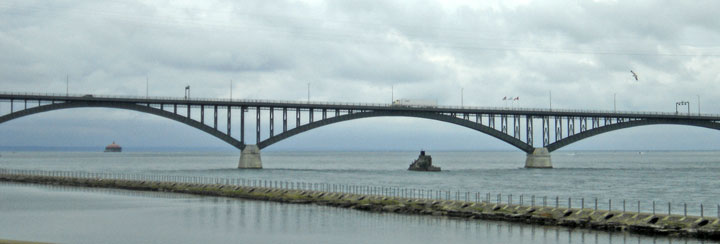
bridge to Canada
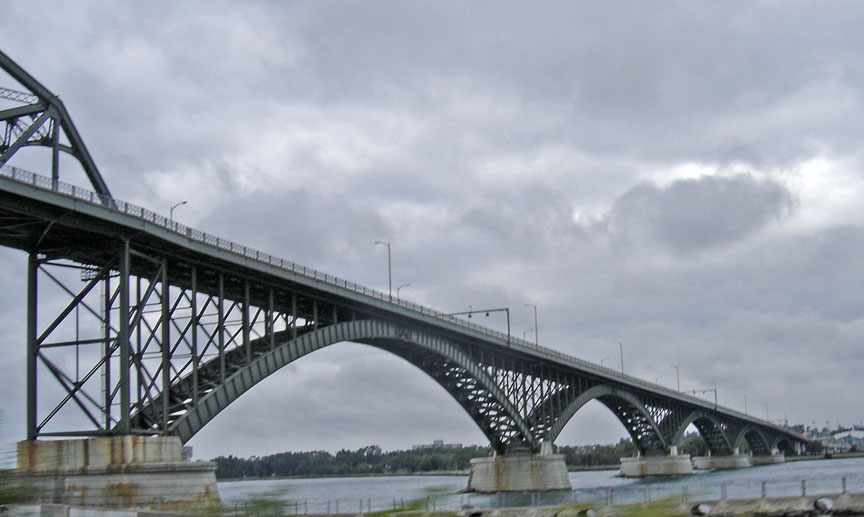
Lighthouse and Marina
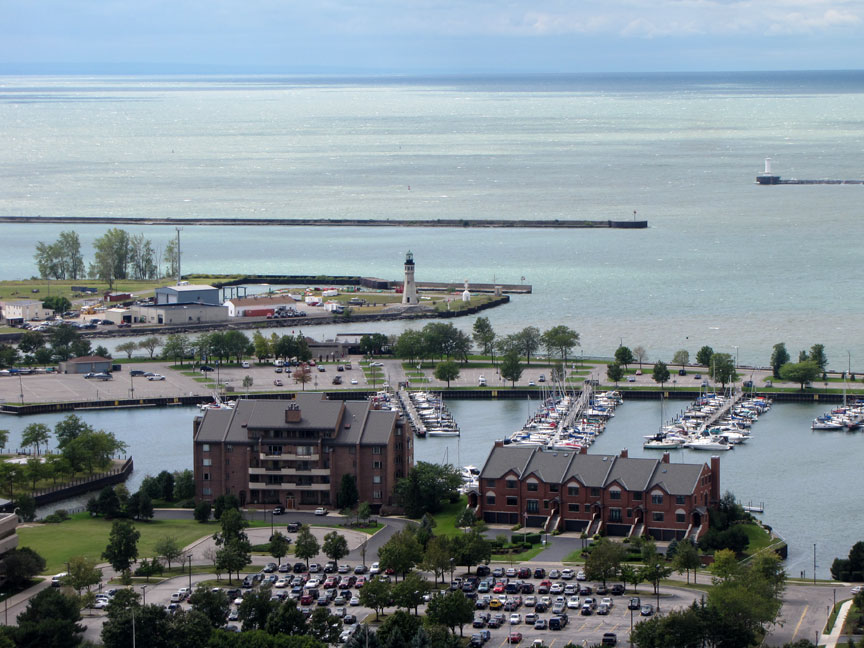
lighthouse and marina
photo from the top of City Hall
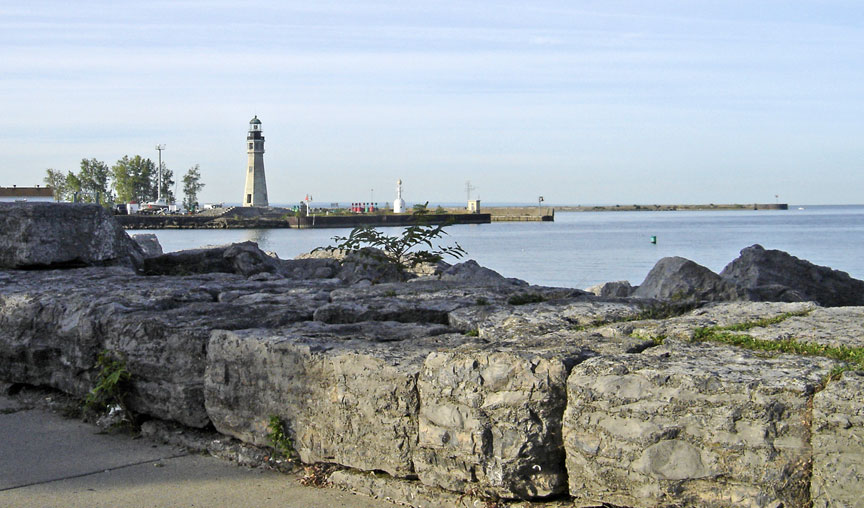
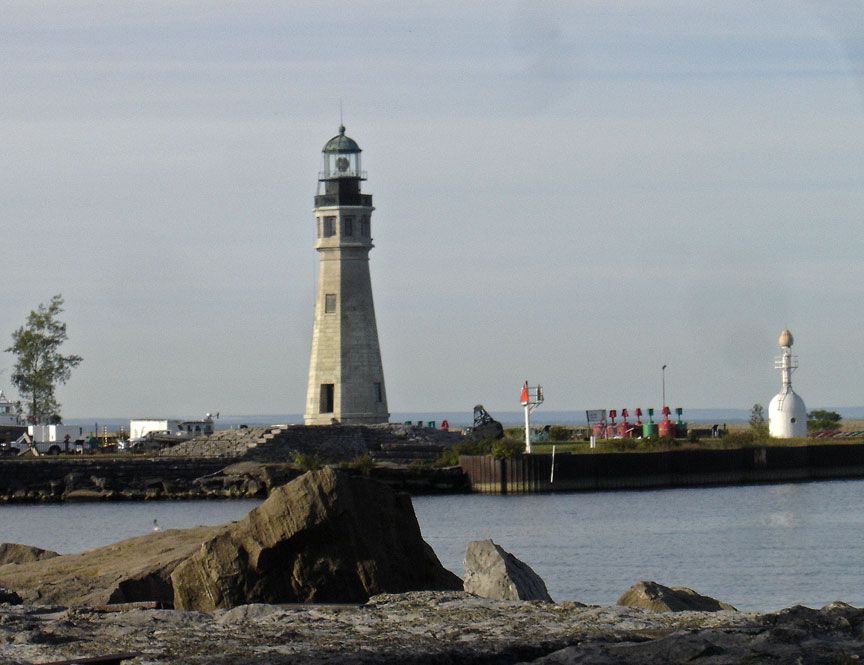
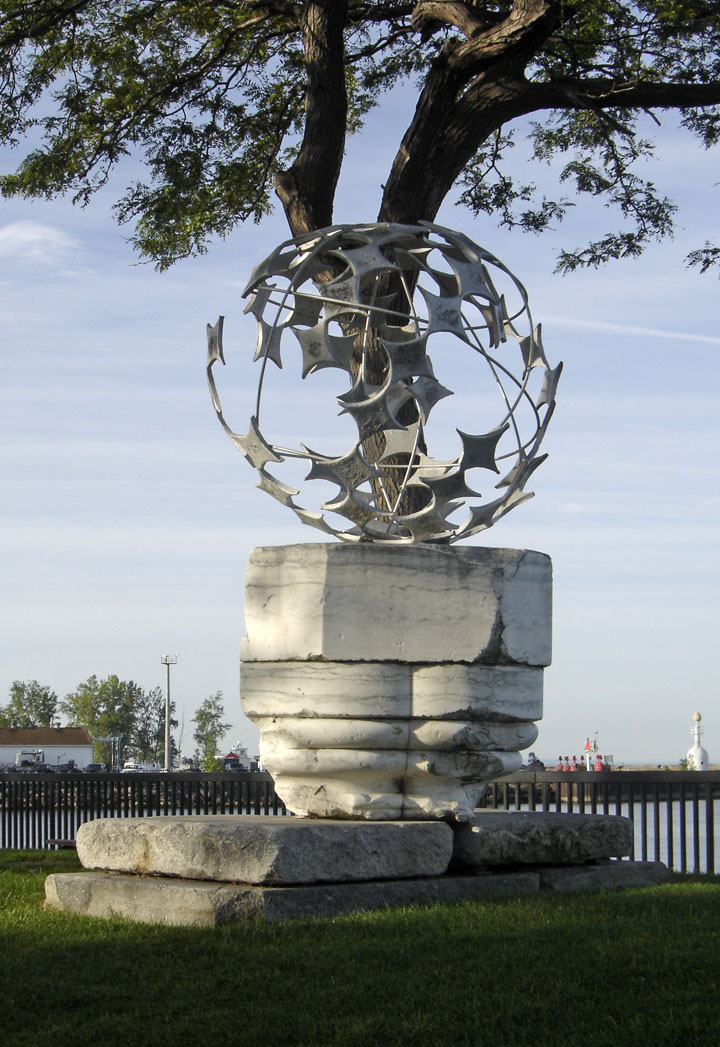
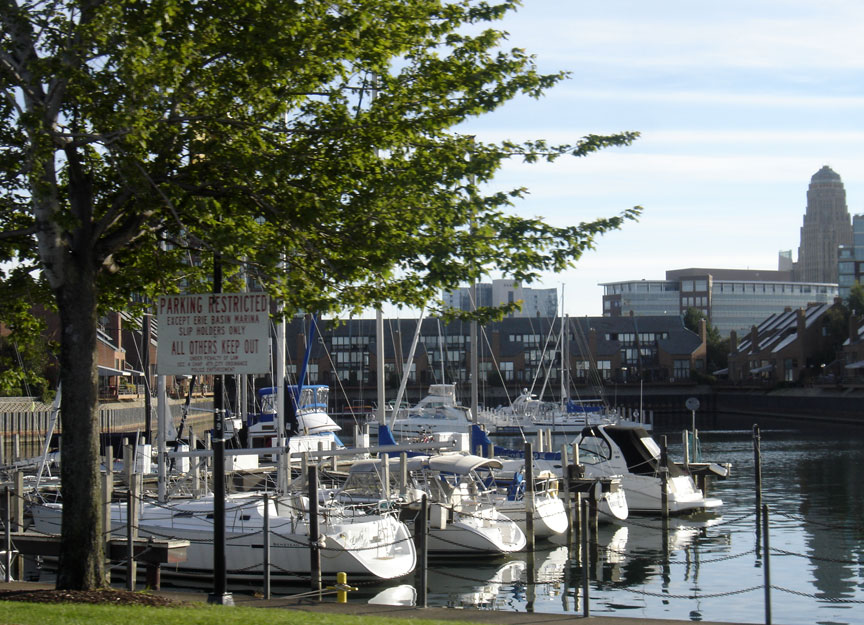
Erie Basin Marina
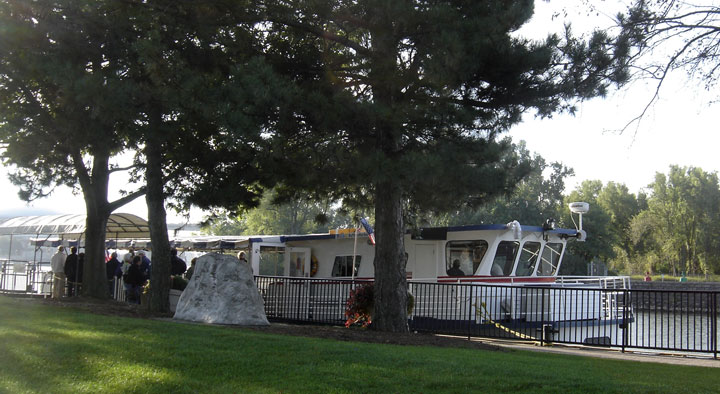
loading for a Buffalo River boat tour
